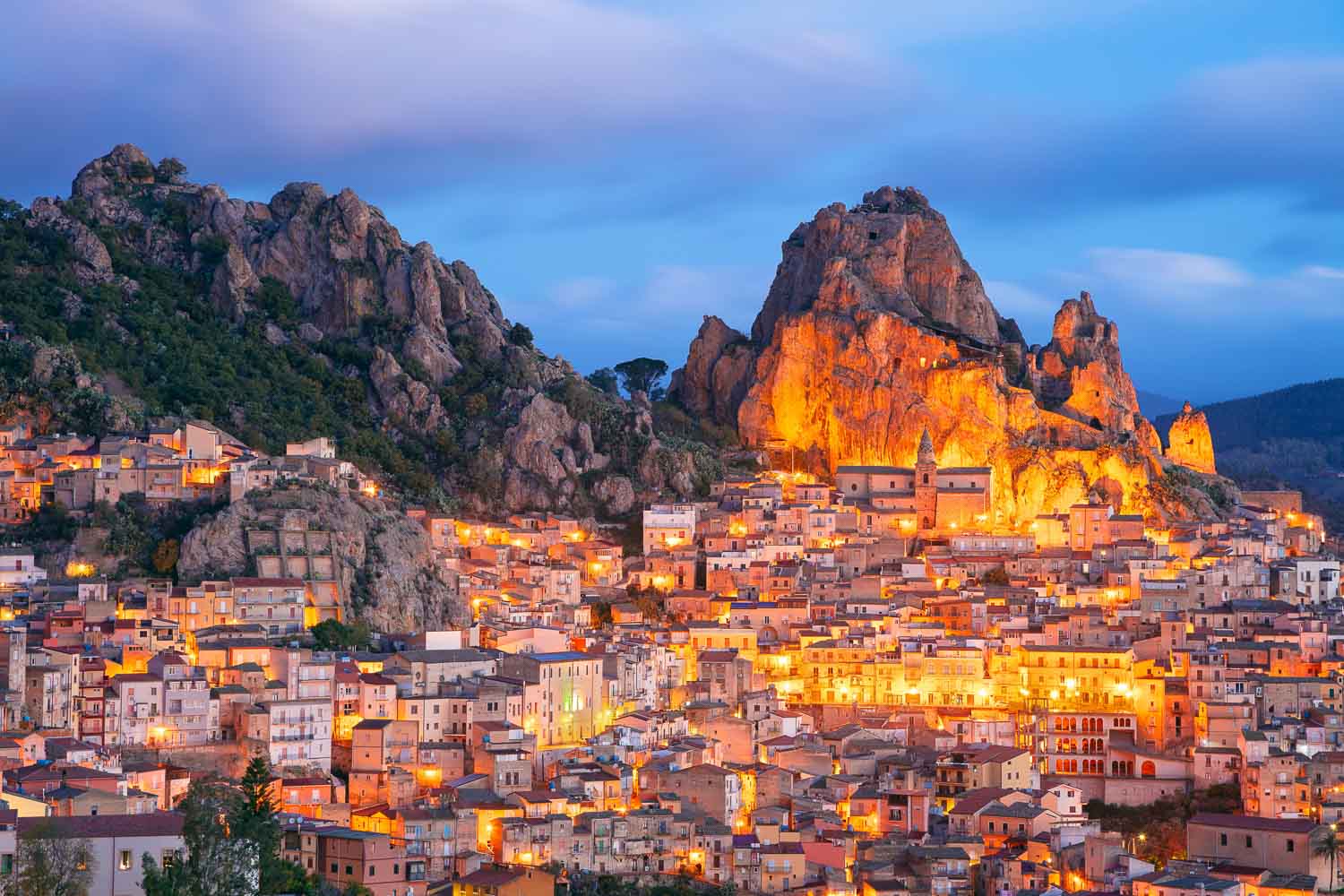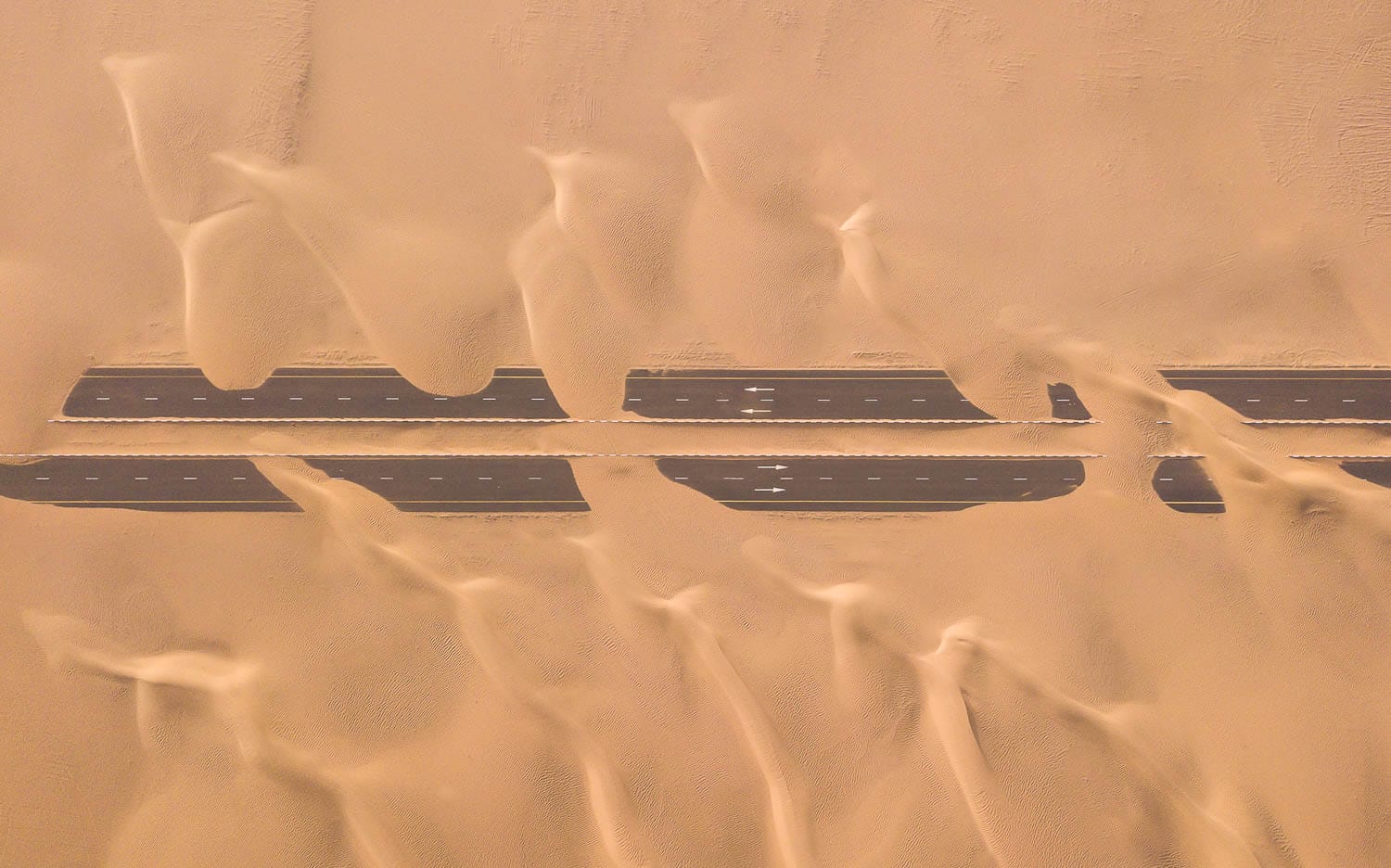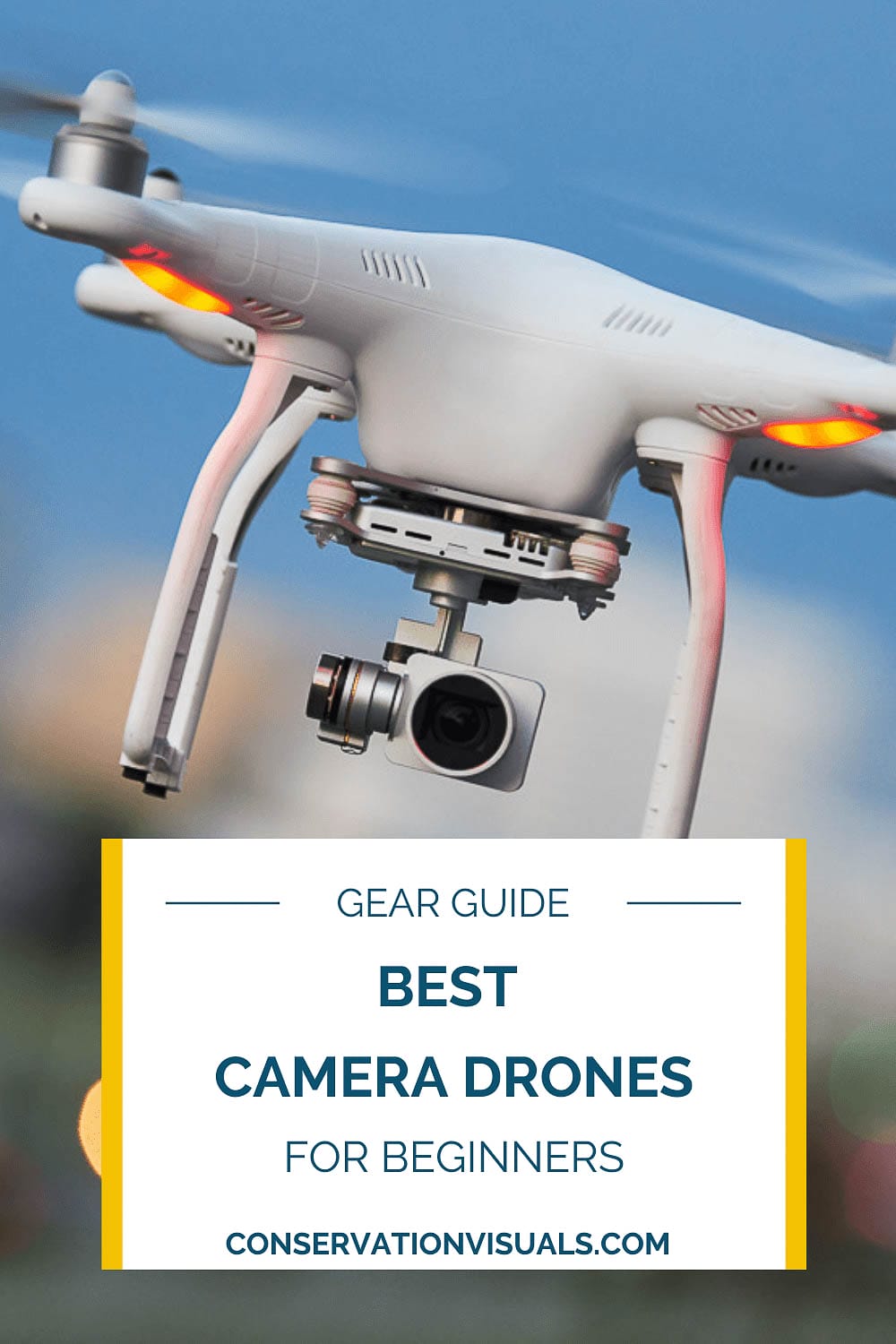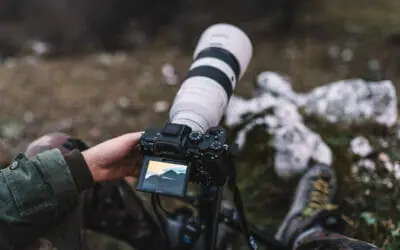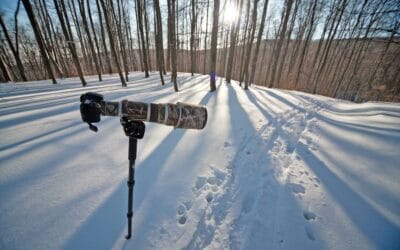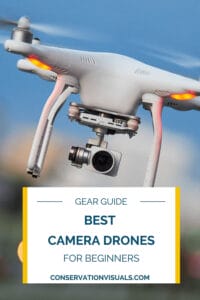With the advent of drone technology, capturing the world from a bird's-eye view has never been so accessible! For photographers, both professional and hobbyists, there are incredible opportunities to apply their camera skills to the art of aerial photography with the vast range of consumer drones available (while having some fun flying.)
Finding the right drone to assist in capturing the perfect shot doesn't need to be as complicated as, say, learning to fly! While the quest to finding the best beginner drone may seem daunting, we're here to help find.
Choosing the right beginner drone can unlock a whole new world of photographic potential.
And, when it comes to the best camera drones for beginners, it's all about finding a balance between cost, features, and ease of use. As your confidence grows, you can explore other drones with more complicated features.
But, when you're just getting started, keep things simple and take a chance on falling in love with the flight – and the aerial photos you capture along the way!
Contents
- How we picked the best drones for beginners
- 10 Drone features to consider
- DJI Mini 4 Pro
- DJI Mini 3
- DJI Mini 2 SE
- Autel Robotics Evo Nano+
- DJI Ryze Tech Tello
- FAQs
- What types of drones are there?
- How much should a beginner spend on a drone?
- Do I need a license to fly a drone?
- Ethical considerations
- Choosing the best drone for you
Our picks at a glance
How we picked the best drones for beginners
We at Conservation Visual Storytellers Academy have extensive experience in nature photography. To choose the best recommendations for you, we combine personal experience, insights from fellow pros and industry experts, editorial and user reviews, and details from manufacturers. We carefully weigh the pros and cons of each item and put only what we feel is the best selection available into our recommendation guides.
We've curated a selection of drones meant to meet the needs of different goals and budgets. Factors we take into consideration include stills and video resolution, battery life, and more features that allow you to have the best experience.
For advice on what to consider in a drone and how to choose the best drone for you, use the table of contents to jump to those sections.
10 Drone features to consider
Drone technology has advanced significantly in the last few years, resulting in a plethora of features available even on beginner drones. Here's a look at a few to be familiar with.
1. Gimbal
Before we get to resolution and other features photographers like us often begin with, let's explore a term that might be new to us: gimbal.
Gimbals are mechanical devices that maintain a level orientation for the camera, absorbing the vibrations and movements of the drone while it's in flight. A high-quality gimbal enables the camera to capture stable and clear images or videos even when the drone is navigating through the air.
Gimbals come in different types, with the most effective being the 3-axis gimbal which can compensate for drone movements in three directions – pitch, yaw, and roll. This results in smoother footage and sharper images, which is key for high-quality aerial photography.
2. Resolution
In drone photography as with all photography, resolution is particularly important as it directly influences the clarity and quality of your images.
Most camera drones on the market have a resolution that falls between 12MP and 48MP. Even those on the lower resolution end can provide decent image quality suitable for smaller prints or for folks just getting started.
Remember, while more megapixels often mean better image quality, they also typically come with a higher price tag and may require more storage space. As a beginner, you'll want to strike a balance between cost, storage considerations, and your need for high-quality images.
3. Video Quality
Drones with high video resolution can provide stunning, detailed footage that brings your subjects to life, whether it's a sprawling landscape or a herd of wildlife.
For beginners, a drone with 1080p resolution will likely suffice, but as you get more comfortable with controlling your drone and processing footage, you may opt for one capable of shooting in 4K.
Again, like with stills, higher video quality requires more storage space, plus potentially more advanced editing software.
4. Video Capabilities
While we're on the video train, let's take a quick look at video capabilities available in modern drones. One is vertical video – video footage that is shot in portrait orientation.
This format is perfectly suited to smartphone viewing and social media posting.
Not all drones offer this capability, so if vertical video is something you're interested in, make sure to check if your chosen drone supports it.
Other features like slow-motion filming can add dramatic flair to your footage by slowing down fast-paced action, while time-lapse options allow you to condense hours into seconds, revealing patterns and movements in your subject matter that would be otherwise missed in real time.
Some drones also come with First Person View (FPV) capability. An FPV drone provides a unique, immersive flying experience. When piloting an FPV drone, you see what the drone sees in real-time, thanks to a camera mounted on the drone that transmits live video feed to FPV goggles.
FPV drones may require a bit more technical know-how and practice to master, so be prepared to embrace a learning curve.
5. Flight Time
It goes without saying, but the longer your drone can stay in the air, the more opportunities you have to capture the perfect shot.
Flight time is determined by battery life.
With a longer battery life, you have more time to plan your shots, explore different angles, and cover broader areas.
A beginner drone with a flight time of around 20 minutes is a solid choice and, as you advance in your drone skills, consider investing in a drone with a longer battery life or purchasing spare batteries.
(Keep in mind though that a spare battery may increase the weight beyond that 249 gram threshold.)
6. Flight Range
Flight range refers to the distance a drone can fly from its controller while maintaining a strong, stable connection. This factor impacts the kind of shots you can capture and the overall operating flexibility you have.
For beginners, a drone with a moderate flight range is likely enough to learn the ropes and start capturing aerial footage.
If you opt for a camera drone with a longer flight range, you'll also want it to be GPS-enabled, at the very least, as well as a return home feature so it can safely make its way back to you if it's out of range or low on battery.
7. Obstacle Avoidance
While this feature isn't standard, it can play a key role in protecting your drone from damage, especially when you're still learning.
Obstacle avoidance sensors detect the presence of the obstacles and either halt the drone or help it navigate around them, reducing the risk of damaging the drone in flight.
For beginners, this feature can be a lifesaver as it adds an extra layer of safety while you're still mastering the controls.
While obstacle avoidance sensors can increase the price of the drone, they're a worthy investment for the added protection they provide.
8. Remote Control
The remote control serves as the primary interface between the pilot and the drone, facilitating a wide range of functions crucial for the drone's flight and operation.
With the remote control, you can navigate the drone, adjusting its altitude and direction, and control its speed. It's through this device that you instruct the drone to take off, land, or return home.
Beyond flight control, the remote control also plays a vital role in managing the drone's camera.
From the remote, you can adjust camera settings such as exposure and shutter speed, control the gimbal for stable and smooth footage, and trigger the camera to capture photos or start recording videos.
Some advanced remotes may even come with a built-in screen or can be paired with a smartphone or tablet to provide a live video feed from the drone's camera to phone screens.
9. Weight
As we've already covered, what a drone weighs affects the legalities of its use but it also impacts flight capabilities.
Heavier drones typically require more power to stay aloft, which can reduce battery life, but they also tend to be more stable in windy conditions.
On the flip side, lighter drones tend to be more agile, which can offer added maneuverability when you're trying to capture dynamic footage.
For beginners, starting with a lightweight drone might be a less complicated entry point into the world of drone photography.
Also, if you're hiking to a photo location, a lightweight drone ensures you can easily carry your equipment without feeling weighed down.
10. Price
Budget drones provide a fantastic starting point for beginners dipping their toes into the world of drone photography.
They offer a cost-effective way to learn the basics of navigation and camera control without a hefty price tag.
While they may lack some of the high-end features of more expensive models, the best budget drones still offer good flight stability and decent image quality.
Best Drones for Beginners: Our Reviews & Recommendations
1. DJI Mini 4 Pro
High-tech drone features combined with an incredible camera makes this one of the best drones for beginners
- 1/1.3" CMOS sensor with impressive still and video resolution
- Omnidirectional obstacle sensing
- True vertical shooting
- 1080p/60fps live feed at up to 20km
- High dynamic range
- Return to home feature
- 2 GB onboard memory
- Premium features come at a premium price
SPECIFICATIONS
- Resolution: 48MP
- Video: 4K HDR
- Flight Time: 34 min
- Flight Range: 20 km
- Obstacle Avoidance: Yes
- Weight: 249 g
WHAT WE THINK
The first drone on our list is the best of the starter drones.
The DJI Mini 4 Pro combines an advanced feature set with a remarkable ease of use for beginners. With its 1/1.3″ CMOS sensor, the DJI Mini 4 Pro delivers stunning video and still images at 4K and 48MP resolution.
Safety features like its omnidirectional obstacle detection allows you to navigate complex environments with ease for up to 34 minutes.
Its ActiveTrack 360° feature allows users to customize intelligent tracking with ease, providing a dynamic way to capture subjects.
While it does come with a premium price tag, the DJI Mini 4 Pro offers an array of premium features that justify the cost.
BEST PRICES
2. DJI Mini 3
A lightweight and compact drone packed full of advanced features – at more attainable price point than the Mini 4 Pro
- 1/1.3-inch CMOS sensor
- Produces great images
- 38kph wind resistance
- True vertical shooting
- Auto takeoff function
- Return to home function
- No internal storage
- Obstacle avoidance only available in Pro model
SPECIFICATIONS
- Resolution: 12MP
- Video: 4K HDR
- Flight Time: 38 min
- Flight Range: 10 km
- Obstacle Avoidance: No
- Weight: 248 g
WHAT WE THINK
Although it doesn't match the resolution of the DJI Mini 4 Pro, the DJI Mini 3 is still an impressive option.
Boasting a 12MP resolution and a flight range of 10km, this lightweight 248g drone is known for its compactness, flexibility, and readiness for adventure.
The well-thought-out gimbal design provides the camera with a large-angle tilt, opening up more shooting options. The Auto Takeoff function simplifies the start of any flight journey and True Vertical Shooting ensures even casual shots taken along that journey are striking and ready to share.
While we'd love to see obstacle avoidance on the base model (obstacle avoidance and tracking features are available in the Mini 3 Pro model) the other features make this arguably one of, if not the, best starter drone.
BEST PRICES
3. DJI Mini 2 SE
Tiny package, feature-filled, awesome camera – what can we say besides that we love the DJI Mini 2 SE
- 1/2.3-inch CMOS sensor
- 38kph wind resistance
- 4× digital zoom
- Return to home feature
- One tap take-off and landing
- Intuitive controls
- Lacks vertical shooting
- Lacks collision sensors
SPECIFICATIONS
- Resolution: 12MP
- Video: 2.7K
- Flight Time: 31 min
- Flight Range: 10 km
- Obstacle Avoidance: No
- Weight: 240 g
WHAT WE THINK
Among the most affordable of the DJI drones on our list, the DJI Mini 2 SE is an exceptional option for a drone for beginners.
While less feature-stacked, when you're getting started many of us just want a solid device with a good camera to help us learn the ropes. With its robust design, intuitive use, and excellent 12MP 1/2.3-inch CMOS sensor, that's exactly what the DJI Mini 2 SE brings to the table.
While there are more inexpensive options available (don't worry; we'll cover them down the page), this is the only drone on our list that combines such a stellar camera with genuinely impressive features at a reeeeeeally reasonable price.
BEST PRICES
4. Autel Robotics Evo Nano+
While we're impressed by this device's drone functionality, we're even more impressed with the camera on the Autel Robotics Evo Nano+
- 1/1.28" CMOS sensor with a Leica lens
- 3-axis gimbal stabilization
- Exceptional video and still image quality
- PDAF+CDAF autofocusing system
- Return to home function
- 3-direction obstacle avoidance
- Can be a bit glitchy
SPECIFICATIONS
- Resolution: 48MP
- Video: 4K HDR
- Flight Time: 28 min
- Flight Range: 10 km
- Obstacle Avoidance: Yes
- Weight: 249 g
WHAT WE THINK
The Autel EVO Nano+ is a compact drone that packs a photographic punch. Its standout feature is the impressive 1/1.28″ CMOS sensor, housed in a 3-axis gimbal, that can capture images of up to 50MP and record videos of up to 4K30p Ultra HD quality.
Additionally, the drone's dual PDAF+CDAF autofocusing system, alongside its large aperture and RYYB color filter array, ensures fast-moving subjects remain in focus, while also enabling low-light content capture with minimal noise.
With a flight time of up to 28 minutes, the Nano+ allows you to explore and capture aerial footage of remote areas from a safe distance even in windy conditions.
While this model is a bit on the advanced end, if you're already somewhat familiar with the photography tech and with piloting a drone, this is the next step up.
BEST PRICES
5. DJI Ryze Tech Tello
As a budget option to get you going, the Ryze Tello fits the bill for its simplicity and decent shooting capabilities
- Easy to use
- Throw and go take-off
- Vision positioning system aids in hovering
- Affordable option
- Fairly simple design
- Only recommended in windless conditions
- No return to home feature
SPECIFICATIONS
- Resolution: 5MP
- Video: 720p
- Flight Time: 13 min
- Flight Range: 100m
- Obstacle Avoidance: No
- Weight: 80 g
WHAT WE THINK
An affordable alternative to DJI (while still powered by a DJI flight control system), the Ryze Tello is an excellent beginners drone, particularly for those of us sticking to a tight budget.
Lightweight and compact, it gives just the basics: 5MP resolution, the Tello app and your smartphone as a controller, and a 13 minute battery life.
Budget-friendly and easy to use, the Ryze Tello is a great starter drone.
Though it may lack some of the advanced features of its pricier counterparts, it's a great way to learn the basics of drone operation.
BEST PRICES
Photo: Valentin Valkov/Shutterstock
Drones bust open a whole new realm for nature photographers. But it's important to keep ethics in mind at all times – for the benefit of people and wildlife alike.
FAQs
What types of drones are there?
Drones come in a variety of shapes and sizes, each designed with specific features to suit various needs.
For our purposes, we're focusing on camera drones (can you believe some drones don't even have a camera?! As photographers, we're like “As if!”) that are under 250 grams.
Drones over 249 grams require FAA registration and that's just not something most beginners want take on in addition to learning how to fly!
If you opt for a heavier drone, you can take care of the FAA registration at the FAA's website. Keep in mind that all registered drone operators are required to follow a set of rules, including flying below 400 feet, always keeping the drone within sight, and never flying near other aircraft or over groups of people.
Understanding and following these federal regulations ensures that you operate your drone safely and responsibly, preserving not only the beauty of nature but also the safety of all airspace users.
Now let's explore the various types of drones!
❂ Multi-Rotor
Multi-rotor drones, as the name suggests, are equipped with multiple rotors – generally four, six, or eight. These drones are the most common type of drone used for aerial photography due to their ability to hover in one place.
They're also the best beginner drones due to their relative ease of use and affordability.
They are often equipped with built-in cameras, but some models allow for the attachment of external cameras, providing flexibility for photographers to use the equipment of their choice.
The main drawback of multi-rotor drones is their relatively short flight time. Consuming a lot of energy to stay airborne, they typically offer a flight time of only 20 to 30 minutes on a single battery charge.
❂ Fixed Wing
Fixed-wing drones, resembling a mini airplane, have wings instead of arms.
Their design allows them to cover longer distances, fly at higher speeds, and carry more weight- all traits that make them perfect for tasks like aerial mapping, inspections, or monitoring wildlife over large areas.
Unlike multi-rotor drones which can hover and descend vertically, fixed-wing drones require a runway for takeoff and landing, which can make them tricky for beginners.
Also, most fixed-wing drones tend to weigh more than 250 grams due to their design and the technology they incorporate.
❂ Single Rotor
Single rotor drones, often resembling miniature helicopters, have a primary rotor for lift and a smaller rotor on the tail for stability and direction.
This design results in greater efficiency than multi-rotor drones, allowing for extended flight times, typically ranging from 30 minutes to 1 hour, depending on the model and payload.
The extended flight time makes them especially effective for tasks requiring prolonged aerial coverage, such as land surveys, rescue missions, and in-depth wildlife studies.
However, their control systems and mechanics are more similar to real helicopters, which can be challenging for beginners who, you know, don't know how to fly a helicopter.
❂ Hybrid
Hybrid drones are a blend of the best features of both fixed-wing and rotor drones. They possess the long-range capabilities and speed of fixed-wing drones along with the hovering ability and vertical take-off and landing of rotor drones.
Hybrid drones that weigh under 250 grams are pretty rare though, primarily due to their inherent design which combines elements of both fixed-wing and rotor drones.
Beginners looking to explore hybrid drone photography should be prepared to register their drone with the FAA.
Also, be prepared to spend a bit more as hybrid drones tend to be more expensive than single-type drones. However, for ambitious beginner drone photographers willing to make the investment, they offer a superior degree of flexibility and capability.
While they might not be the first choice for beginners due to their complexity and cost, but for those ready to take the next step in drone photography, they are certainly worth considering.
Photo: Lukas Gojda/Shutterstock
Just imagine flying above lava fields like this, exploring patterns, textures and compositions that you've never photographed before.
How much should a beginner spend on a drone?
Deciding how much to spend on a beginner drone really comes down to your personal budget and how serious you are about drone photography.
A reasonable starting point for beginners would be somewhere in the range of $100 to $300.
This price range usually includes drones that are easy to control, durable, and equipped with decent cameras.
For instance, the DJI Tello, a popular choice among beginners, falls into this bracket.
If you have a higher budget and you're more serious about photography, you might want to consider investing in a drone that's a step up.
Drones in the $300 to $1000 range typically have better camera quality and more advanced features, such as longer flight times, better stability in the wind, and obstacle avoidance.
The DJI Mini 4, a favorite among enthusiasts, is a great example of premium features in a beginner drone that can make learning to fly that much easier and more interesting.
Keep in mind though, the initial purchase price isn't the only cost to consider. You should also budget for spare batteries, carry cases, replacement parts and, possibly, insurance.
It's also worth noting that a more expensive drone does not necessarily make a better pilot. Take your time, learn the ropes, and upgrade to the fancy models (hello, DJI Mavics!) once you've honed your skills.
Do I need a license to fly a drone?
Whether you need a license to fly a drone greatly depends on where you intend to fly and what you plan to use the drone for.
In countries like the United States, the Federal Aviation Administration (FAA) requires drone pilots who use their drones for commercial purposes to obtain a Remote Pilot Certificate, commonly known as a Part 107 license.
However, if you're a hobbyist, you may not need a license but you're still required to register your drone and adhere to the FAA's safety guidelines. You can get more details at the FAA's website.
In other countries, the rules can vary, so it's always essential to check local regulations before taking flight.
Always remember, being a responsible drone operator means understanding and complying with the laws of the airspace you're operating in.
Photo: Rudy Balasko/Shutterstock
Enjoy exploring new, surprising views for your nature, landscape or travel photography!
Ethical considerations
Drone technology has revolutionized the field of nature photography, providing a new way of capturing photos of wildlife in their natural habitats.
Drones allows photographers to access previously unreachable locations and perspectives, opening up a world of creative possibilities.
While this is exciting, it's also of the utmost important that this be done with respect.
As conservation photographers, whether with a traditional camera or a drone remote control in our hands, we must always act as principled and ethical environmental stewards and minimize our disturbance to the natural world and the wildlife that call it home.
Always abide by local regulations and avoid disturbing animals or their habitats.
If you're unsure, consult with local wildlife agencies or conservation organizations for guidance.
Check out our helpful guide to ethics for nature photographers
Photo: Kertu/Shutterstock
Drone photography opens up possibilities for photographing unique, surprising, and otherwise-inaccessible compositions.
Choosing the best drone for you
When deciding which type of drone to choose, there are several aspects to consider. Your decision should be based on your own needs, experience level, and photography goals.
Firstly, evaluate your skill level. Are you a rookie pilot or have some flight hours under your belt? If you're a beginner, choose a beginner drone that's user-friendly and has features that make flying easier like obstacle avoidance sensors and an easy-to-use remote control.
Next, consider your photography objectives. Do you plan to capture high-speed action, serene landscapes, or detailed close-ups? Different drones offer different camera specs, so choose one that best suits your creative vision.
The environment where you'll be flying also matters. If you're mostly in wide-open spaces, a drone with a long flight range might be beneficial. But if you're in tighter or more complex environments, a drone with strong obstacle avoidance systems would be a smarter choice.
Lastly, determine your budget. Drone prices range from budget-friendly to high-end. Remember, while more expensive drones may offer advanced features, there are plenty of affordable options that still deliver impressive results.
Choosing the right drone is about finding the perfect balance between these factors. So take your time, and make sure the drone you choose aligns with your goals and capabilities.
Final Thoughts
The world of drone photography offers practically infinate opportunities for you to explore, learn, and create stunning visuals.
Investing in a beginner drone is the first step towards this exciting journey. It's not just about the price, but also considering features like flight time, range, video capabilities and more, that fit your specific requirements.
And while technology plays a significant role, what ultimately matters is how you use these tools to capture nature's breathtaking beauty, while respecting and conserving its wilderness.
So, gear up and let your creative journey take flight!









